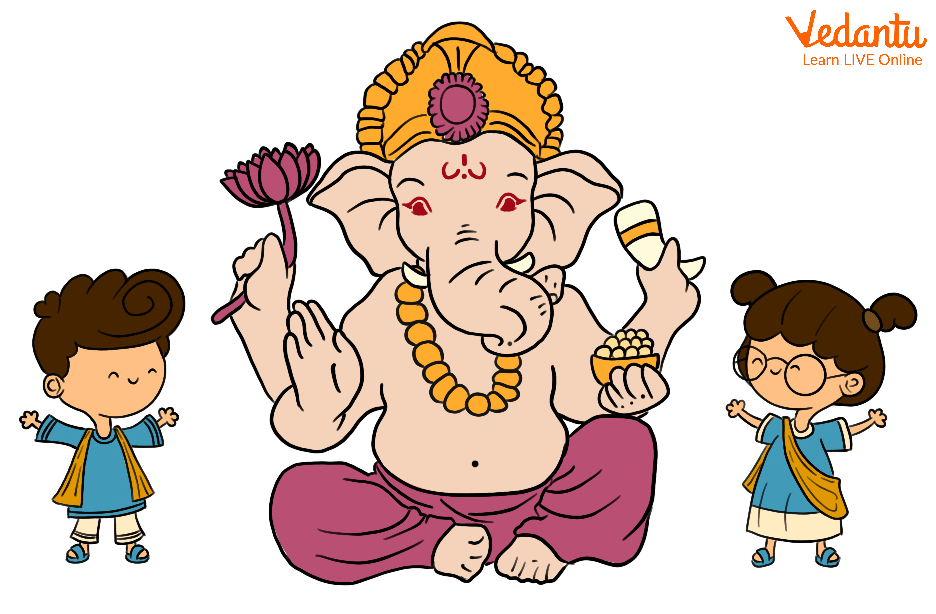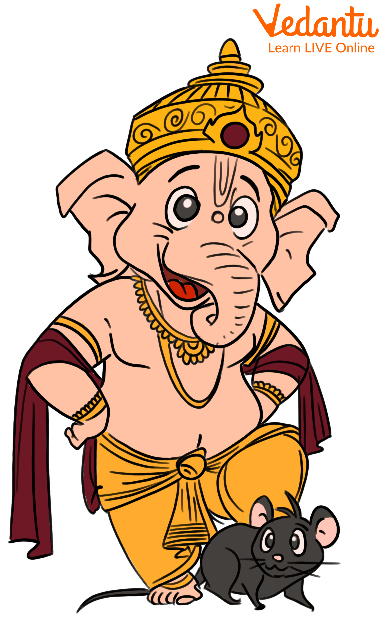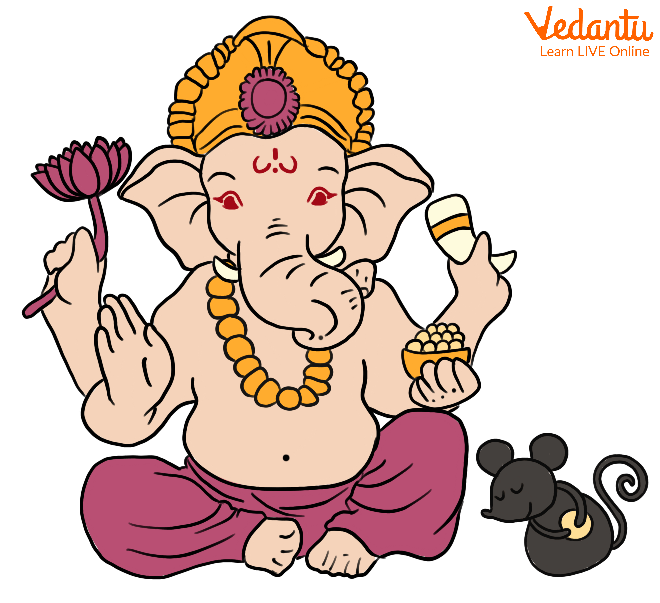Ganesha Stories for Kids: Short Tales and Big Lessons

Meet Lord Ganesha – The Elephant-Headed God
Lord Ganesha is one of the most celebrated and beloved deities in Hindu tradition. Widely known as the “Remover of Obstacles”, Ganesha is worshipped at the beginning of new ventures across India and around the world. The elephant-headed god is an enduring symbol of wisdom, intellect, humility, and good fortune, embodying values highly relevant for students preparing for academic and personal challenges.
Who is Lord Ganesha?
Lord Ganesha, also called Ganapati or Vinayaka, is the son of Lord Shiva and Goddess Parvati. He is easily recognized by his elephant head, large ears, and potbelly, all rich in symbolic meaning. “Ganesha” comes from Sanskrit: “Gana” means group or people, and “Isha” means Lord—signifying his role as the leader of Shiva’s followers. In many rituals, Ganesha is invoked first, emphasizing his position as the bringer of auspicious beginnings and remover of challenges.

Symbolism and Importance for Students
Ganesha’s form is a blend of unique features:
- Elephant Head: Symbolizes wisdom, intelligence, and a calm mind.
- Large Ears: Encourages us to listen more, a quality essential for learning.
- Small Eyes and Mouth: Suggest focus and speaking less.
- Mouse (his vehicle): Represents humility and the idea that even small beings can serve great purposes.

The Birth Story of Ganesha
The story of Ganesha’s birth is inspiring and teaches valuable life lessons. According to mythology, Goddess Parvati created Ganesha from clay or sandalwood paste to guard her privacy. One day, as Ganesha obediently stopped Lord Shiva (unaware of Ganesha’s identity) from entering, Shiva, angered, beheaded him. Moved by Parvati’s grief, Shiva replaced his head with that of a young elephant, thus reviving him. This tale conveys important messages:
- Always obey and respect elders—but also value compassion and quick correction of mistakes.
- Even after setbacks, one can rise stronger by adapting and embracing new beginnings.
Moral Stories and Life Lessons from Lord Ganesha
The tales of Ganesha are full of practical wisdom. One famous story tells how Ganesha, as a child, once teased a cat, not realizing that his actions hurt his mother, Goddess Parvati, who exists in all living beings. This story teaches:
- Our actions can have consequences beyond what we see—a lesson in empathy and responsibility.
- We must show kindness and respect to all living things, understanding our interconnectedness.

In conclusion, the stories and symbolism of Lord Ganesha offer enduring lessons for students in 2025. By embracing the values of wisdom, humility, and perseverance, youth can overcome obstacles and achieve success in both studies and life. Celebrate Ganesha’s spirit by participating in meaningful activities and reflecting on how his teachings apply to your own journey of growth and learning.


FAQs on Ganesha Stories for Kids: Short Tales and Big Lessons
1. Who is Lord Ganesha and why are his stories important for kids?
Lord Ganesha is a beloved Hindu deity known for his elephant head and cheerful nature. He is worshipped as the remover of obstacles and the god of wisdom and new beginnings. His stories are important for children because they are filled with fun adventures and teach valuable life lessons about intelligence, respect, and kindness in a simple and memorable way.
2. What are some of the most popular short tales about Ganesha?
Some of the most popular and engaging Ganesha stories for kids include:
- The story of how Ganesha got his elephant head.
- The tale of Ganesha's race around the world with his brother, Kartikeya.
- The story explaining why Ganesha has a broken tusk and its connection to the Mahabharata.
- The fable about Ganesha and the Moon, which teaches humility.
3. Why does Lord Ganesha have an elephant's head?
According to the tales, Ganesha was created by Goddess Parvati. When Lord Shiva, not knowing who Ganesha was, returned home, a fight occurred in which Ganesha's original head was lost. To console Parvati, Shiva replaced it with the head of the first creature he found, an elephant. This elephant head symbolises immense wisdom, strength, and good fortune, making him a powerful and wise deity.
4. What is the moral of the story where Ganesha races his brother Kartikeya?
The moral of this famous story is that wisdom and intelligence are more powerful than physical strength. While Kartikeya sped around the world on his peacock, Ganesha simply walked around his parents, Lord Shiva and Parvati, stating that they were his whole world. This thoughtful act won him the race and teaches children the value of creative thinking and respecting their parents.
5. How can parents use Ganesha stories to teach children important values?
Parents can use these stories to teach fundamental values in an engaging way. For example:
- The story of the broken tusk teaches the importance of duty and sacrifice for knowledge.
- The story with the Moon teaches children not to be arrogant and to have humility.
- Ganesha's devotion to his parents highlights the importance of family, love, and respect for elders.
6. What does Ganesha's vehicle, the mouse, symbolise?
Ganesha's vehicle, a small mouse or 'Mooshak', symbolises the idea that no problem is too big or too small to overcome. The mouse represents desire and the ego, which can be controlled by wisdom (Ganesha). It teaches children that with intelligence and humility, one can control even the most troubling thoughts and overcome any challenge, regardless of one's size or power.




